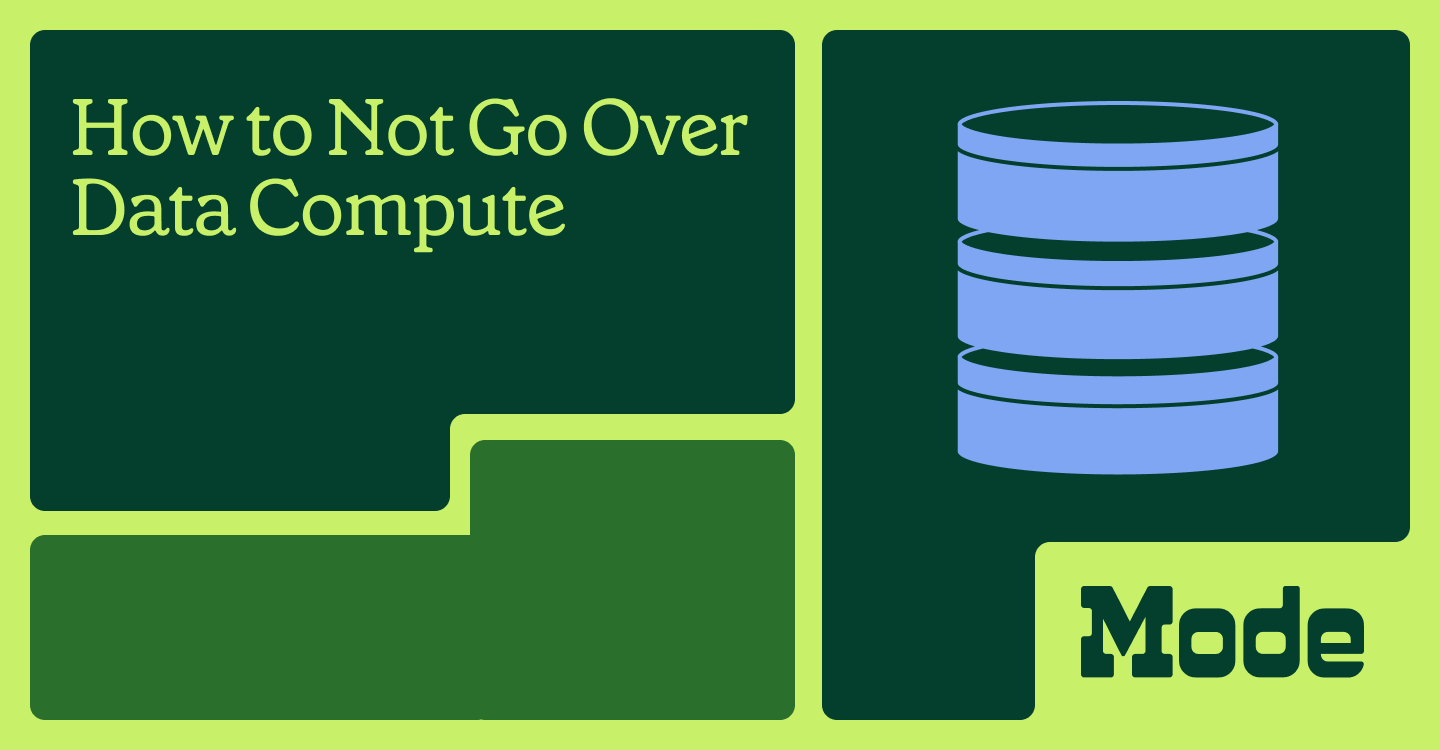Before starting Mode, I was an analyst. It's embarrassing to admit, but at the time, I thought I had all the answers. I thought that being the one with access to data made me the arbiter of truth, and that I was right by default when talking with someone who wasn't using quantitative information to back up their ideas.
I was wrong.
I didn’t understand my blindspots. I didn’t have enough respect for the “unknown unknowns”. I've gained some perspective since then, and have learned that it's never black and white.
Since starting Mode, I’ve gotten to work in every part of the business. I've worked on sales, marketing, product, operations, HR, finance, you name it. I’ve learned that no matter how much data you may have, no matter how great your model is, you should always take the opportunity to get hands-on experience with your problem, if you can. Eliminate your blindspots.
Let’s explore this idea with an example from my time at Yammer.
Assumptions in the Funnel
At Yammer, analysts were directed to always work on the highest-impact problem you could find.
When I worked with the sales team there as an analyst, I learned what made a lead qualified, who our competitors were, and what they sold. I researched what sales teams did at other top-tier companies. I learned my company's strengths and weaknesses within the context of our market. But… I never actually sold the product.
At Yammer, the sales team spent most of their time working to upsell users of the free version to the paid product. I spent a lot of my time helping those salespeople figure out the best existing warm users to contact. But I wanted to figure out whether there were high-potential prospects who weren't already using the free product. Could a salesperson be more successful by prospecting completely cold into companies that had not yet signed up at all? I believed some companies could potentially be better prospects without even touching the product than existing warm users. So I built a model to find high-potential cold prospects, looking for common characteristics of prospects with a higher-than-average response rate to cold outreach.
I did get a few things right with this project. There were indeed companies out there not yet using Yammer’s free product who responded favorably to sales outreach. I even figured out pretty well how to identify them.
But I got one very important thing wrong. I hadn’t adequately considered whether those companies that responded favorably to cold outreach would convert down the funnel at the same rate as companies that came in warm after having used the free product. Sure enough, though many cold prospects converted at the very top of the funnel, their adoption rate was far below that of organizations that had been on the free plan, and most failed to stick. I could find prospects that would respond well to cold outreach, but they weren't going to create as much value for the company as warm prospects. The sales team knew this intuitively and largely ignored my work.
Context is Everything
Now that I have (a small amount of) experience actually shepherding deals all the way through the sales funnel, it's obvious to me that my assumptions were flawed. I've felt the pain firsthand of losing a deal that I had thought would close, and I've seen how success at the top of the funnel does not guarantee success at the bottom. But at the time when I was at Yammer, I wasn't interested in owning deals for the sake of achieving greater context. I believed the data was all I needed to create a valuable analysis. This lack of context led to a bad assumption on my part.
My biggest takeaway from this experience is that you should never pass on the chance to get more context about a problem. Every analysis requires assumptions to be made, and the more informed you are about the subject of your analysis, the better your assumptions will be. So question your conscious assumptions, and consider whether you may be making unconscious ones too. Find ways to inform both conscious and unconscious assumptions with more complete experience. Consult with people who feel the pain every day of the problem you're trying to solve. Test your hypothesis. Put yourself in their shoes as closely as possible, and look for opportunities to complement your data with firsthand experience of your own.
Related Articles






